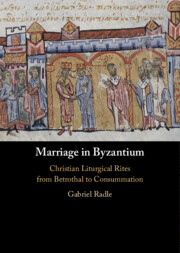Refine search
Actions for selected content:
426 results
8 - ‘Like Horses in Smithfielde’
-
- Book:
- Institutional Change and Property Rights before the Industrial Revolution
- Published online:
- 23 October 2025
- Print publication:
- 06 November 2025, pp 184-198
-
- Chapter
- Export citation
Jane Austen, Law Professor, on Bar Prep: Four Stress-free Lessons on Estates in Land and Family Law
-
- Journal:
- International Journal of Legal Information , First View
- Published online by Cambridge University Press:
- 20 October 2025, pp. 1-11
-
- Article
-
- You have access
- HTML
- Export citation
1 - ‘Another Sort of Treason’
-
-
- Book:
- Law and Constitutional Change
- Published online:
- 26 September 2025
- Print publication:
- 16 October 2025, pp 11-26
-
- Chapter
-
- You have access
- Open access
- HTML
- Export citation
8 - Family
- from Part II - The Merchants’ Selbstzeugnisse
-
- Book:
- Making Merchants
- Published online:
- 19 September 2025
- Print publication:
- 09 October 2025, pp 109-126
-
- Chapter
- Export citation
Chapter 5 - “A Higher Tribunal”
-
-
- Book:
- British Law and Literature in the Long Eighteenth Century
- Published online:
- 19 September 2025
- Print publication:
- 09 October 2025, pp 103-124
-
- Chapter
- Export citation
Chapter 2 - Michael Field’s Diary
- from Part I - Works and Days
-
-
- Book:
- Michael Field in Context
- Published online:
- 03 October 2025
- Print publication:
- 25 September 2025, pp 12-19
-
- Chapter
- Export citation
Chapter 29 - Queer Studies
- from Part V - Afterlives and Future Fields
-
-
- Book:
- Michael Field in Context
- Published online:
- 03 October 2025
- Print publication:
- 25 September 2025, pp 279-287
-
- Chapter
- Export citation
Chapter 3 - Michael Field’s Letters
- from Part I - Works and Days
-
-
- Book:
- Michael Field in Context
- Published online:
- 03 October 2025
- Print publication:
- 25 September 2025, pp 20-29
-
- Chapter
- Export citation

The Cambridge Companion to Christian Liturgy
-
- Published online:
- 19 September 2025
- Print publication:
- 09 October 2025
From the Time of Ignorance to the Afterlife: Gendered Chronotopes and Religious Nostalgia in Swahili-Language Islamic Marital Booklets
-
- Journal:
- Signs and Society ,
- Published online by Cambridge University Press:
- 18 September 2025, pp. 1-17
-
- Article
-
- You have access
- Open access
- HTML
- Export citation
Introduction
-
- Book:
- Love, Class and Empire
- Published online:
- 10 July 2025
- Print publication:
- 04 September 2025, pp 1-16
-
- Chapter
- Export citation
3 - An Expatriate Young Lady
-
- Book:
- Love, Class and Empire
- Published online:
- 10 July 2025
- Print publication:
- 04 September 2025, pp 70-104
-
- Chapter
- Export citation
Unwholesome marriages and diamond drills: The making of the UN Marriage Convention (1962)
-
- Journal:
- Leiden Journal of International Law , First View
- Published online by Cambridge University Press:
- 27 August 2025, pp. 1-28
-
- Article
-
- You have access
- Open access
- HTML
- Export citation
12 - Wars of dynasties, wars of empires: The nature of European conflicts, 1648–1792
-
-
- Book:
- The Cambridge History of War
- Published online:
- 18 July 2025
- Print publication:
- 14 August 2025, pp 309-341
-
- Chapter
- Export citation
Rethinking Marriage: Blurring the “Legal” and the “Social”
-
- Journal:
- Law & Social Inquiry , First View
- Published online by Cambridge University Press:
- 04 August 2025, pp. 1-38
-
- Article
-
- You have access
- Open access
- HTML
- Export citation
Chapter 6 - Money and Marriage in American Literary Realism
- from Part II - Histories
-
-
- Book:
- Money and American Literature
- Published online:
- 03 July 2025
- Print publication:
- 17 July 2025, pp 109-124
-
- Chapter
- Export citation
4 - Surviving the Courses and Clinical Rotations
-
- Book:
- Disorderly Movements
- Published online:
- 17 May 2025
- Print publication:
- 05 June 2025, pp 66-82
-
- Chapter
- Export citation
Part 3 - The Orificial
- from An Opening
-
- Book:
- A Funny Thing
- Published online:
- 16 May 2025
- Print publication:
- 05 June 2025, pp 179-258
-
- Chapter
- Export citation
2 - The 100-Year Life and the New Family Law
- from Part I - Implications across the Legal System
-
-
- Book:
- Law and the 100-Year Life
- Published online:
- 13 May 2025
- Print publication:
- 29 May 2025, pp 26-38
-
- Chapter
-
- You have access
- Open access
- HTML
- Export citation

Marriage in Byzantium
- Christian Liturgical Rites from Betrothal to Consummation
-
- Published online:
- 01 May 2025
- Print publication:
- 23 January 2025
